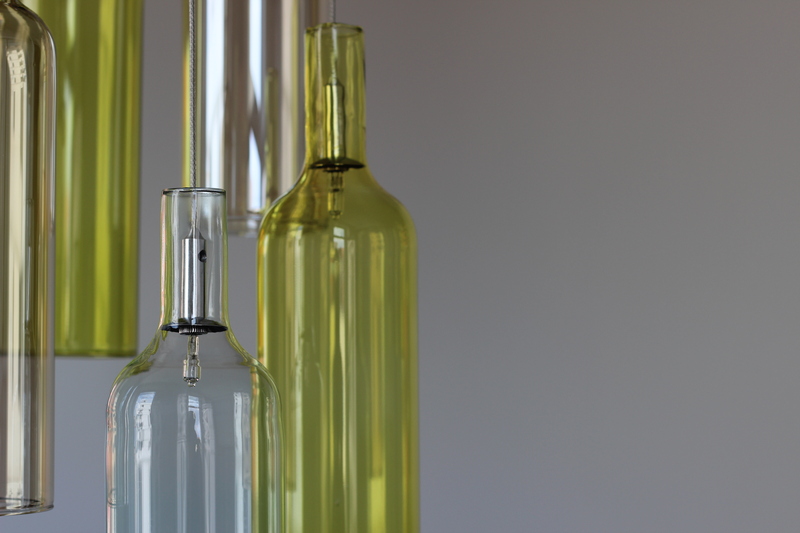Sustainable Disposal Methods for Pots and Pans
In today's sustainability-focused world, traditional items like pots and pans are increasingly subject to eco-friendly scrutiny. When cookware reaches the end of its functional life, tossing it in the trash only isolates the problem, contributing to landfill waste and potential environmental harm. Instead, adopting sustainable disposal methods for pots and pans offers a responsible and environmentally-friendly path forward.

Why Sustainable Disposal of Cookware Matters
Understanding the environmental impact of discarded kitchenware is the first step toward responsible action. Pots and pans are typically made from metals like aluminum, stainless steel, copper, and sometimes include non-stick coatings or plastic parts. Unsustainable disposal can:
- Contribute to overflowing landfills due to metals and non-biodegradable compounds
- Release harmful chemicals into soil and water, especially from non-stick coatings or treated surfaces
- Squander valuable resources that can be recycled or repurposed
Taking the time to find a sustainable way to dispose of your old pots and pans can help lessen environmental degradation and promote a circular economy.
How to Identify If Your Pots and Pans Are Reusable or Disposable
Before considering any eco-friendly disposal method, pause and assess the condition of your cookware. Ask yourself:
- Can it be repaired? A worn-out handle or scratched surface may be fixable.
- Is it safe for reuse? Severely warped or chipped pans with exposed metal, or peeling non-stick coatings, are typically unsafe for both food preparation and further use.
Being resourceful before choosing to part with pots and pans is the very first green action.
Best Sustainable Disposal Methods for Pots and Pans
1. Donate to Charities or Local Communities
If your cookware is still in working order, consider donating old pots and pans to:
- Thrift stores like Goodwill or Salvation Army
- Shelters or food kitchens
- Local community organizations or schools with culinary programs
Donation gives your items a second life, reduces demand for new products, and supports those in need. Always clean your cookware and check if the recipient accepts kitchenware before donating.
2. Sell or Give Away Through Online Platforms
If your cookware still has value, leverage digital marketplaces like:
- Facebook Marketplace
- Craigslist
- Freecycle
- OfferUp
- Local "Buy Nothing" groups
Listing your pots and pans for free or at a low cost can keep them in circulation and out of landfills.
3. Repurpose for Alternative Uses
Culinary items often lend themselves to creative, sustainable upcycling of cookware. Here are some inspired ideas:
- Planters: Transform old pots or pans into unique outdoor or indoor plant homes by adding drainage holes.
- Organizers: Use deep pots to store tools, art supplies, or even umbrellas.
- Bird baths or feeders: Large pans can become wildlife watering holes or feeding trays in your garden.
- Decor: Metallic pans--especially copper or stainless steel--can be polished and used as wall art or functional kitchen decor.
Repurposing cookware creatively is not only eco-friendly, but it can decorate your home and garden in imaginative ways.
4. Recycling Metal Pots and Pans
Most metal cookware--aluminum, cast iron, copper, and stainless steel--is infinitely recyclable. Here's how to ensure proper recycling of pots and pans:
- Check with your local recycling center: Not all curbside recycling accepts large metal items, but most scrap metal facilities do.
- Remove non-metal parts: Handles, knobs, and lids with plastic or wood need to be detached to avoid contaminating the recycling process.
- Sort by metal type: Some centers prefer or require separation between aluminum, steel, and copper.
- Take to a scrap yard: These locations often pay for bulk metal, further incentivizing sustainable disposal.
Metal recycling conserves resources, saves energy, and reduces mining and processing impacts.
5. Specialized Recycling for Non-Stick Coated Cookware
Cookware with non-stick coatings (like Teflon) requires special handling. Most municipal recycling centers do not accept coated pans due to the chemicals involved. Here's what you can do:
- Contact the manufacturer: Some brands offer mail-back recycling programs specifically for their non-stick cookware.
- Seek TerraCycle or similar programs: These services specialize in hard-to-recycle items and might accept non-stick pans for safe handling.
- Check for hazardous waste collection days: Some communities periodically accept otherwise un-recyclable products.
Never incinerate or place non-stick pans in conventional metal recycling due to the risk of releasing toxic fumes.
Eco-Conscious Disposal of Specialty Cookware
Some pots and pans feature special coatings or materials like enameled cast iron, anodized aluminum, or ceramic. Disposing of these sustainably often depends on their structure:
- Enameled cookware: Scrapyards may accept these items if the enamel is not heavily chipped or separated.
- Ceramic pans: If they are pure ceramic, they can occasionally be used as construction fill or garden drainage but check local regulations.
When in doubt, consult your local recycling or waste management authority for guidance on unusual kitchenware disposal.
Creative Recycling: Upcycling Ideas for Old Kitchenware
Avoid sending your old pots and pans to landfill by finding imaginative ways to reuse them:
- Wind chimes: Hang lids and smaller items with strings to create charming garden music.
- Candle holders: Small frying pans can become unique bases for candles or lanterns.
- Toy cast iron pans: These miniatures are perfect for children's play kitchens or art projects.
With a little ingenuity, sustainable disposal of kitchenware becomes a fun, rewarding project.
Understanding What Not to Do
- Do not throw pots and pans directly into the trash if other options exist.
- Do not mix non-stick pans into metal recycling unless coatings are removed or accepted by the recycler.
- Do not burn non-stick or plastic-handled cookware.
- Do not dump cookware in nature or public spaces.
Avoiding landfill disposal of cookware is critical to minimizing environmental impact.
How to Prepare Pots and Pans for Sustainable Disposal
- Clean thoroughly: Remove residue, food, and oils that might complicate recycling or reuse.
- Disassemble if possible: Detach plastic or wood from metal; separate lids from bodies.
- Remove hazardous elements: Batteries in electric cookware, or embedded electronics, must be recycled separately.
- Check local recycling requirements: Adherence to community guidelines ensures smooth handling.
Tips to Prolong the Life of Your Cookware
Prevention is the best form of sustainability. By extending the usable lifespan of your pots and pans, you reduce frequency of disposal altogether:
- Avoid metal utensils on non-stick surfaces
- Hand wash instead of using dishwashers for certain materials
- Store and stack properly to prevent warping and scratches
- Follow manufacturer instructions for cleaning and usage
Careful use and maintenance mean less waste and greater savings over time.

Local and Global Sustainable Disposal Initiatives
Sustainable cookware disposal is growing in importance worldwide. Here are some notable trends and organizations:
- Manufacturer Take-Back Programs: Some cookware companies now offer recycling or buy-back initiatives, especially for higher-end products.
- Community Recycling Events: Many cities hold periodic drives for collecting hard-to-recycle household items--check your municipality's calendar.
- Non-Profit Partnerships: Groups like Habitat for Humanity may accept cookware for use in construction crews or resale stores.
Conclusion: Choosing Sustainable Disposal for Kitchenware
Whether it's through donation, recycling, upcycling, or proper hazardous disposal, the way you get rid of old pots and pans matters. Sustainable cookware disposal methods minimize environmental impact, conserve resources, and support community initiatives. By choosing one of the sustainable routes outlined above, you'll not only keep your kitchen updated, but also help safeguard the planet for generations to come.
Each pot or pan that's donated, recycled, or creatively repurposed is a win for both you and the environment. The next time your favorite fry pan or stockpot needs replacing, remember: sustainable disposal is always in style!
Frequently Asked Questions: Sustainable Pots and Pans Disposal
-
Can all metal pots and pans be recycled?
Most are recyclable, but check for plastic or non-stick parts and consult recyclers first. -
Can I recycle Teflon pans?
Only through specialized or manufacturer programs unless locally accepted--never in standard metal recycling. -
What is the most environmentally friendly disposal method?
Reuse, donation, then recycling offer the lowest environmental impact in that order.
Want to help the planet while upgrading your cookware? Choose sustainable disposal for your pots and pans every time.
